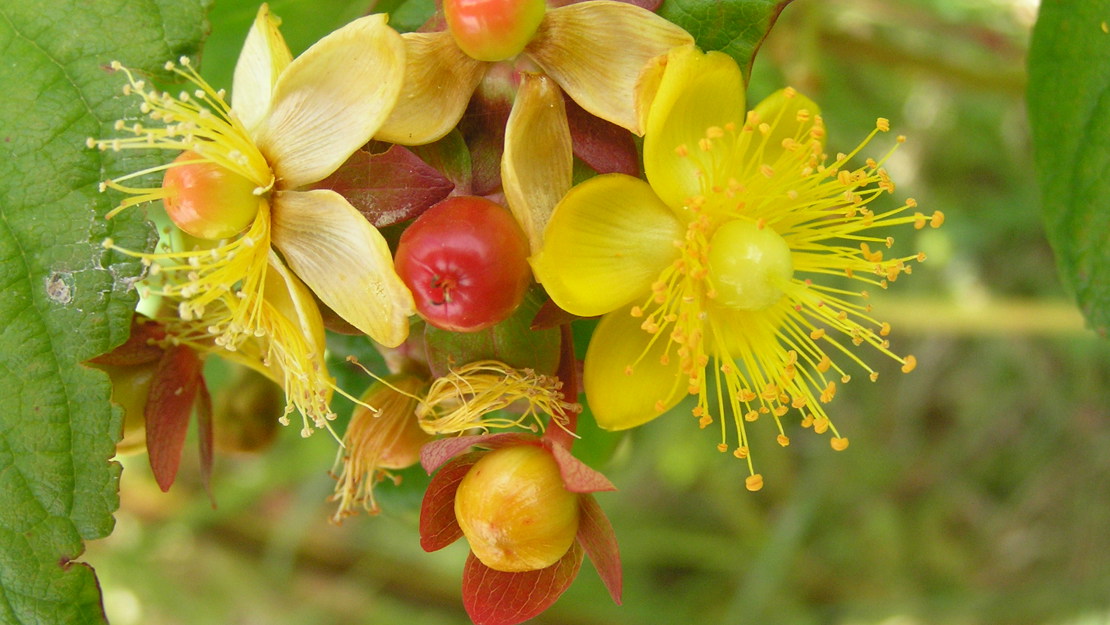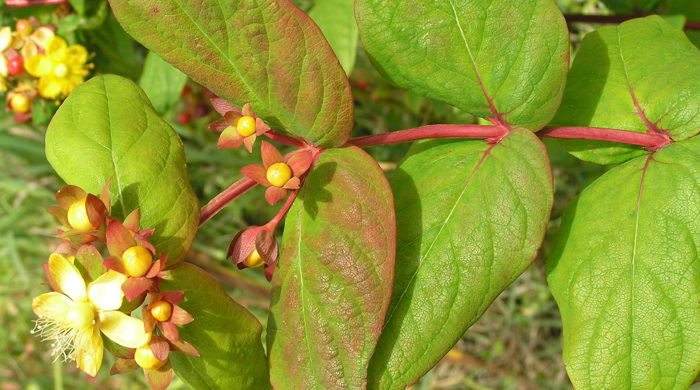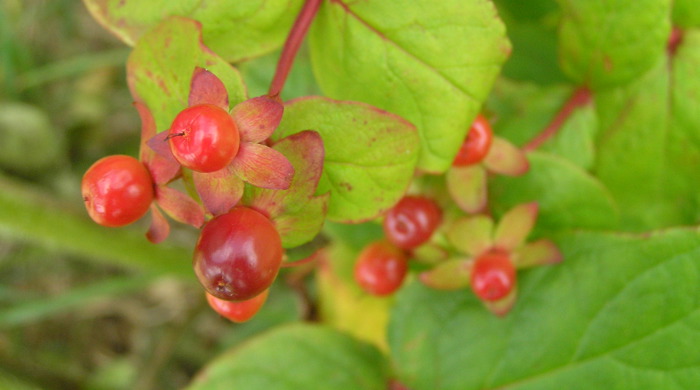Hypericum androsaemum
Tutsan
Family: Clusiaceae
Origin: Europe

Regional Pest Management Plan (RPMP) status
- National Pest Plant Accord Species
- Whole region — Sustained control
General description
Semi-evergreen perennial shrub < 1.5 m tall. Stems are slender and semi-woody. Leaves are < 15 x 8 cm, ovate or elliptic, hairless and opposite. Flowers are yellow with green sepals and borne in November – February. Fruits are green berries that ripen to black.
What you need to know
To help protect our environment:
- You must not breed, distribute, release or sell tutsan. As tutsan is a National Pest Plant Accord species, these restrictions apply within the Auckland region and across the whole of New Zealand.
- You must not plant tutsan within the Auckland region, unless you are transferring an existing plant on your land to another location within the boundaries of the same property.
- You must destroy any tutsan on land that you occupy if it has been planted in breach of the above rules and you are directed to do so by an authorised person.
Habitats
Forest, woodland, forest margins, riparian areas, roadsides, regenerating scrub, pasture.
Dispersal
Seeds dispersed by birds, water, wind and possibly possums. Human-mediated dispersal through contaminated vehicle and soil movement and dumping of garden waste.
Impact on environment
Forms dense stands, excluding native vegetation and suppressing seedling recruitment. May affect habitat availability and food resources for native and exotic fauna. Reduces pasture and plantation productivity, causes photosensitisation and dermatitis in livestock.
Control
Site Management
Follow up treated areas 3 times per year. Encourage natural regeneration of native plants or replant treated areas where possible after 2-3 treatments to establish dense ground cover and minimise reinvasion.
Recommended approaches
Physical control
Method: Dig out.
Plant parts requiring disposal: Seeds.
Disposal options: Remove to greenwaste or landfill if practical.
Biocontrol
Check for presence of agents: Tutsan beetle ( Chrysolina abchasica).
Community agrichemical control recommendations
No qualifications: Cut stump and paste freshly cut base of stems with double strength glyphosate gel or cut stump and spray freshly cut base with 200ml glyphosate green per 1L of water.
Certified handler/experienced agrichemical user: Foliar spray with 100ml glyphosate green per 10L of water and 20ml penetrant.
Caution: When using any herbicide or pesticide please read the label thoroughly to ensure that all instructions and safety requirements are followed.





